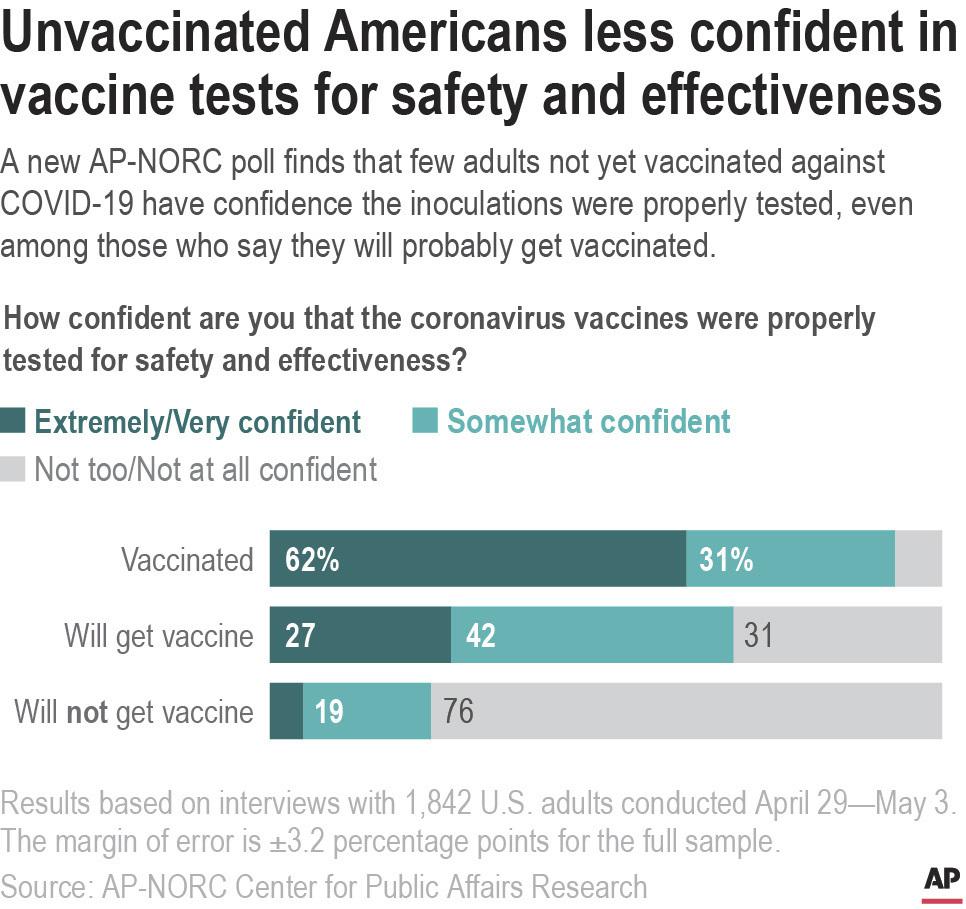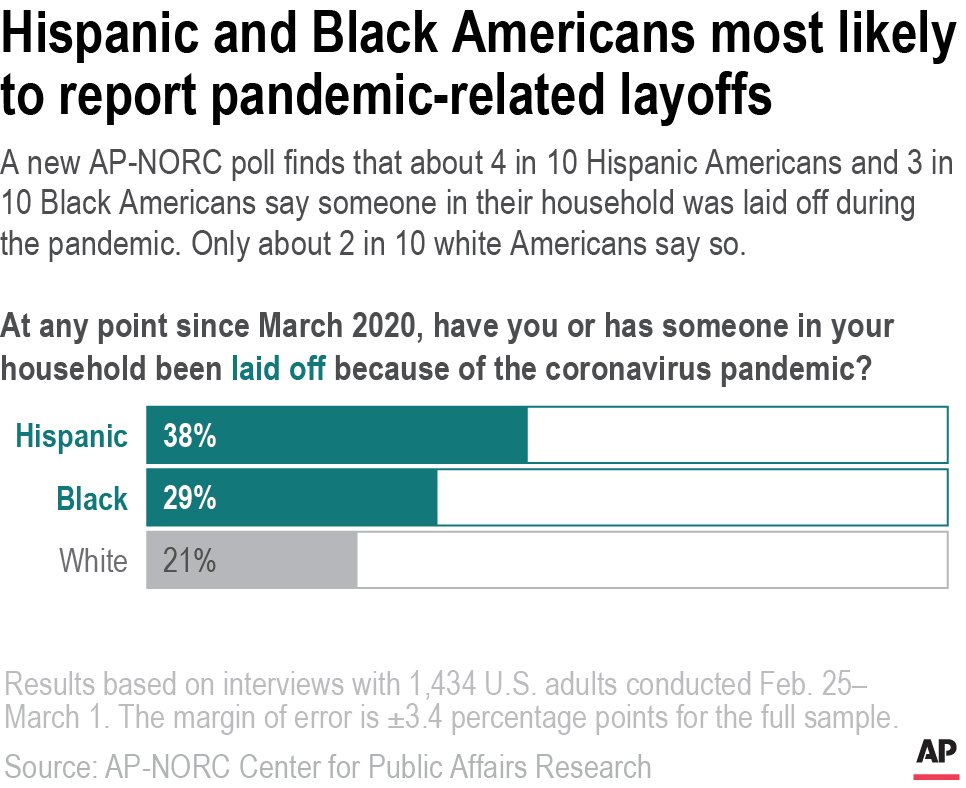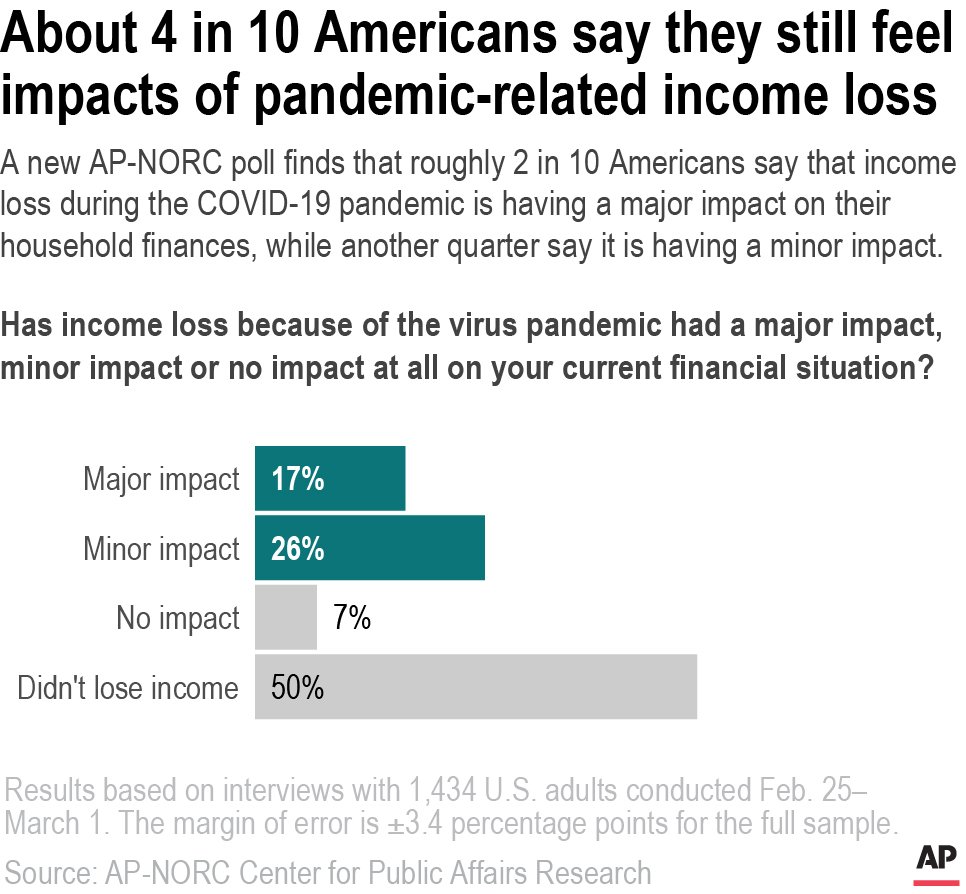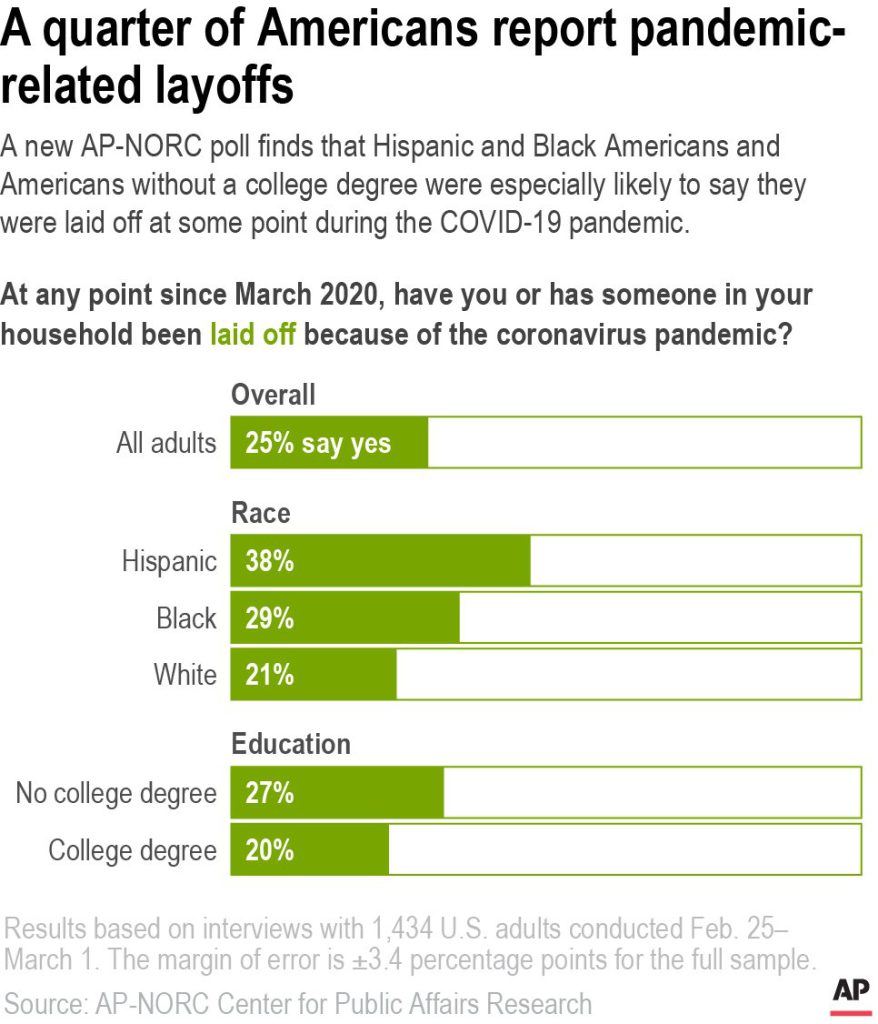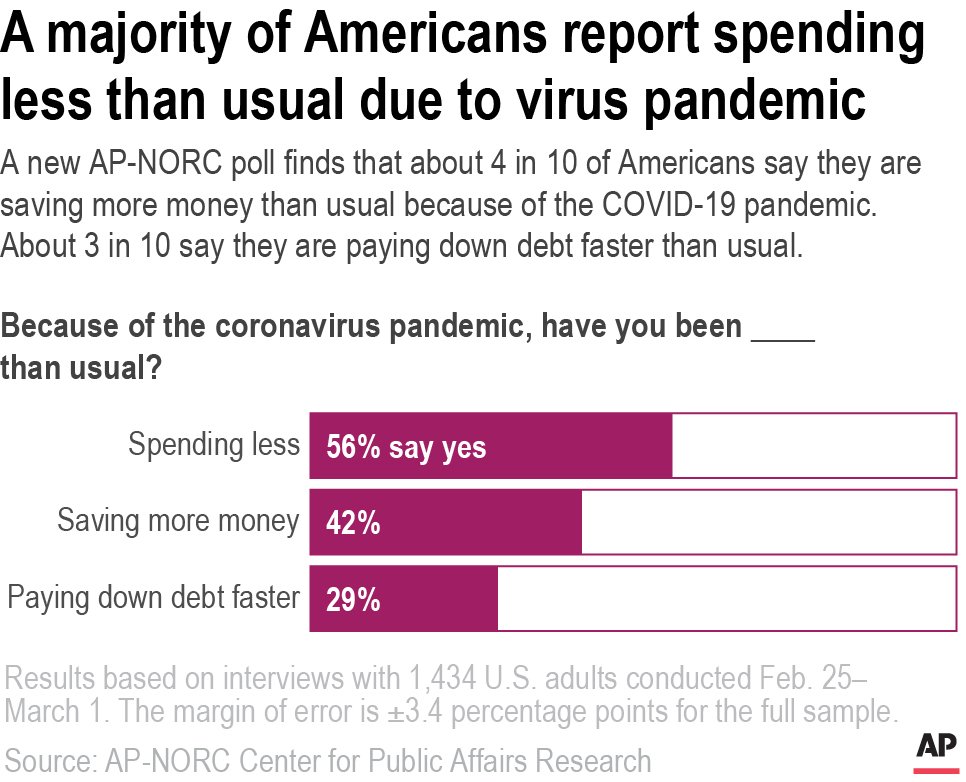Kat Stafford and Hannah Fingerhut | the Associated Press
May 21, 2021
A year after George Floyd’s murder at the hands of a white police officer sparked global protests and a racial reckoning, a majority of Americans say racism and police violence are serious problems facing the nation. Yet relatively few believe attention in the past year to the issues has led to positive change.
A poll from The Associated Press-NORC Center for Public Affairs Research shows Americans are more likely than they were before Floyd’s death to say that police violence is a serious problem and about half think police who cause harm on the job are treated too leniently by the justice system. The poll also found that about 6 in 10 Americans say racism in the United States is a very or extremely serious problem; it’s similar to the percentage that said the same thing one year ago.
But about half of Americans, including about 6 in 10 Black Americans, say Derek Chauvin conviction of Floyd’s murder has not changed their level of confidence in the criminal justice system. About one-third say their confidence increased. Chauvin, a former Minneapolis police officer, was convicted in April on state charges of murder and manslaughter in Floyd’s death. A federal grand jury indicted Chauvin and three other former Minneapolis police officers involved in Floyd’s arrest and death after the poll was conducted.
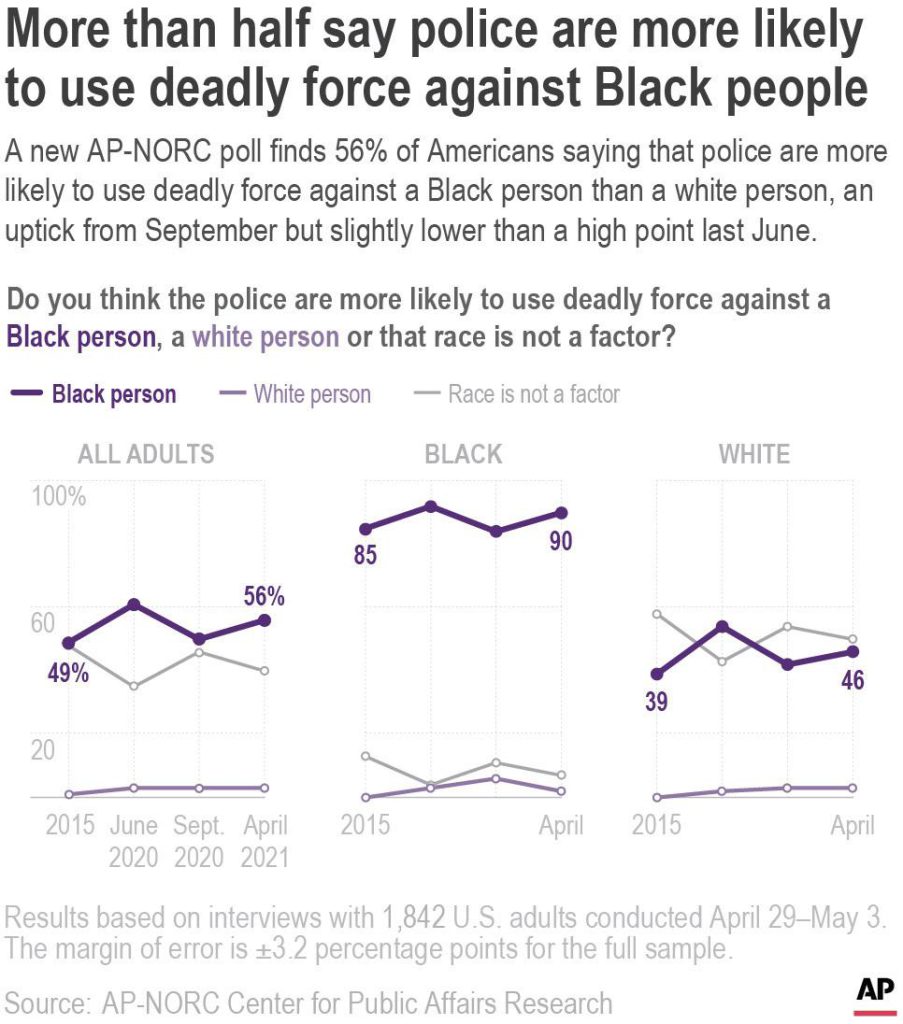
“Racism is a core feature of American life and it dominates certain relationships between African Americans and white Americans in ways that I don’t see how they’re going to change in the near or distant future,” said Kyle T. Mays, assistant professor in African American Studies and American Indian Studies at the University of California, Los Angeles.
AP-NORC polling showed a shift in views of police violence and injustice toward Black Americans last June, just weeks after Floyd’s killing. In 2019, just 36% of Americans called police violence an extremely or very serious problem. After Floyd was killed, that number increased to 48%, and 45% say so now. About 6 in 10 say police are more likely to use deadly force against a Black person than against a white person.
At 77%, the overwhelming majority of Black Americans say police violence is a very serious problem, compared with 36% of white Americans. Among white Americans, the percentage saying police violence is not a serious problem increased from 26% last June to 36% now; that’s roughly the same percentage who said so in 2019, before Floyd’s killing.
The partisan gap in views of police violence as a serious problem has also widened since last June. Among Democrats, about 7 in 10 say police violence is a very serious problem. Among Republicans, 58% say it is not a serious problem, compared with 44% last June.
Georgia resident Linda R. Curtis, who was a police officer for 24 years, believes police misconduct is a serious issue, partly because of problematic behavior she witnessed throughout her career. Despite her history within law enforcement, as a Black woman, she worries about her family’s safety.
“When police see me, they don’t say, ‘Oh, this is a retired police officer,’ or that my other half is a retired firefighter or that my two children are sons of a retired police officer and firefighter,” Curtis said. “They just see two Black men and an opportunity. I’ve always taught my sons how to respond when they’re stopped because of what I saw in my own ranks.”
A majority of Americans continue to support sweeping changes to the criminal justice system, including 25% who think it needs a complete overhaul and 43% that it needs major changes. An additional 27% support minor changes, while just 4% think no changes are needed. Black Americans are most likely to call for the largest changes.
Louisiana resident Alan Hence said that as a Black man, he has faced discrimination by police who, he believed, were often aggressive toward him during routine traffic stops because of his race. His personal encounters and the “deep hurt” he felt after the killing of Floyd and other Black Americans at the hands of police reinforced his belief that the nation’s criminal justice system needs to be overhauled.
“This country was founded on supremacy that cultivated racism and I believe that it created a culture in America that stands strong today and has proven extremely hard to change,” said Hence, 40. “But investing in changing police culture, changing their relationships and procedures when dealing with the public, could have a drastic effect.”
Relatively few Americans, 24%, say attention on police violence against Black Americans over the past year has led to change for the better, while 31% say it has led to change for the worse and 44% say it has made no difference. Fifty-four percent of Black Americans say it has not made a difference, with the remainder split evenly between seeing change for the better and for the worse.
“Nothing has really fundamentally changed, even if you put one individual in prison for police violence,” said Mays, the UCLA professor and author of “An Afro-Indigenous History of the United States.”
The House of Representatives passed the George Floyd Justice in Policing Act in March, but the bill is unlikely to win approval in the Senate before the May 25 anniversary of Floyd’s death. The bill, which would end qualified immunity and implement other changes, has faced significant Republican opposition, as well as criticism from some activists who believe it doesn’t go far enough.
Beyond policing, about 8 in 10 Black Americans and about two-thirds of both Hispanic and Asian Americans say racism in the U.S. is a very or extremely serious problem. Among white Americans, about half call it that serious, and about 3 in 10 more say it is moderately serious.
Black Americans say they personally have faced discrimination in a variety of ways. Six in 10 say they have been discriminated against often or sometimes when dealing with the police, compared with just about 1 in 10 white Americans. About 3 in 10 Asian Americans and about 4 in 10 Hispanic Americans say the same.
About 6 in 10 Black Americans also say they have been regularly discriminated against when applying for jobs or in stores or shopping malls, about half when applying for housing or for a loan and about 4 in 10 when receiving health care.
The intersection of dueling crises — the pandemic and the racial justice movement — that have disparately impacted people of color has forced some white Americans in particular to struggle with the nation’s history of racism in ways that they never have before.
“George Floyd definitely had an impact on me,” said Andy Campbell, 57 and an Oklahoma minister. “It was a matter of realizing that the whole country was built on this lie of racism. And that the history of the country was built on a lie of exceptionalism. White supremacy is a white problem. That’s who has to deal with it.”
___
Stafford reported from Detroit and Fingerhut from Washington.
___
Stafford is a national investigative writer with The Associated Press’ Race and Ethnicity team. Follow her on Twitter at https://twitter.com/Kat__Stafford.
___
The AP-NORC poll of 1,842 adults was conducted April 29-May 3 using a sample drawn from NORC’s probability-based AmeriSpeak Panel, which is designed to be representative of the U.S. population. The margin of sampling error for all respondents is plus or minus 3.2 percentage points.

